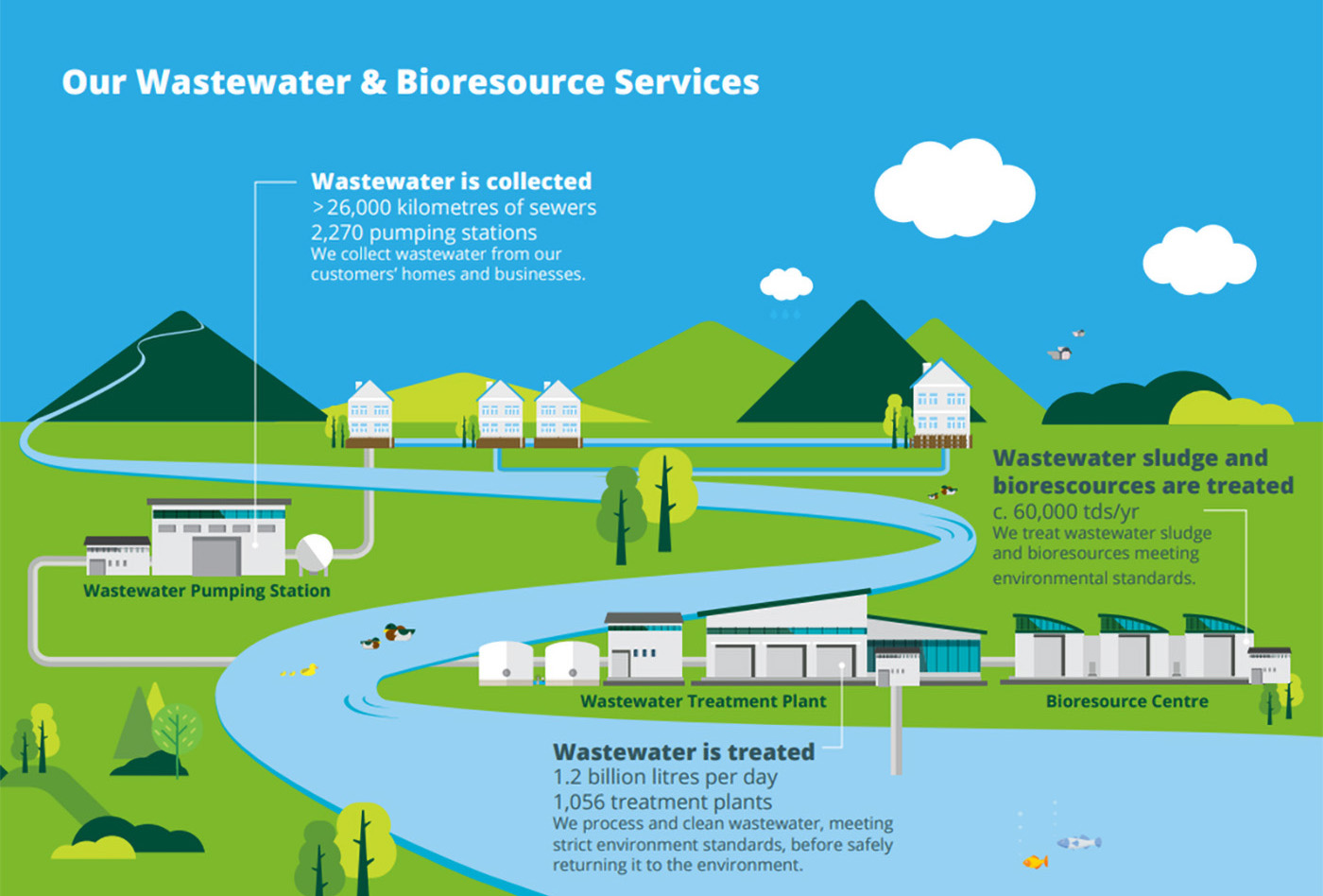Urban Wastewater Sectoral Action Work Plan
This is Uisce Éireann’s Sectoral Action Work Plan in relation to urban wastewater. It outlines how we will meet our obligations to address urban wastewater pressures as outlined in Ireland’s Water Action Plan 2024. The publication of this Sectoral Action Work Plan fulfils Action UWW 10 and Action 1.3 in the Water Action Plan 2024.
The urban wastewater pressure category includes wastewater treatment plants and associated sewer networks; including pumping stations and overflows and any other infrastructure associated with the collection, treatment and return of treated wastewater to the environment. Discharges from wastewater treatment plants and networks can introduce pollutants into the water environment, adversely affecting water quality.
Water Quality Impacts Arising from Urban Wastewater Pressures
Direct discharge of nutrients from treatment plants and discharges from overflows within the sewer network are the most common water quality problems associated with urban wastewater. The excess nutrients can cause eutrophication which is an overgrowth of algae and aquatic plants, which in turn impacts other species and the ecosystem balance. Emissions of elevated concentrations of phosphorus and ammonia from urban wastewater plants or networks are the key nutrients for rivers and lakes, while emissions of nitrogen and phosphorus are the focus for transitional and coastal waters. Elevated concentrations of microbes, such as E.coli, viruses and other pathogens in the waste water may impact public health at bathing and shellfish waters. Chemical impacts associated with pharmaceutical/personal care products, as well as microplastics, may not be removed by the wastewater treatment process and can also be discharged into surface waters.
EPA assessments have shown that the proportion of nutrients from urban wastewater in Irish rivers varies according to nutrient type. For nitrogen, the contribution from urban wastewater is relatively small (8%) in comparison to the load coming from agriculture (84%). For phosphorus, the proportion of the load is higher at (45%). However, it must be noted that 40% of the Irish population lives within 5 kilometres of the coast, which means the majority of their wastewater is predominantly discharged into marine waters, including the Ringsend plant which takes over 40% of the wastewater generated nationally. This means that in the rural environment, the proportion of the phosphorus load coming from urban wastewater is lower than at the national scale, though it can be very important immediately downstream of urban areas at the local scale.

Our wastewater services